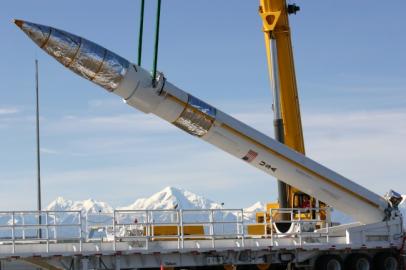The “Rogue” Missile Threat: Getting from BMD to NPT

See The Simons Foundation's Disarming Arctic Security page for briefing papers on military policies and practices in the Arctic region by Ernie Regehr, Senior Fellow in Arctic Security at The Simons Foundation.
The “Rogue” Missile Threat: Getting from BMD to NPT
December 15, 2015
Canadians might soon be asking just where George W. Bush is when we really need him. He used to be a key antidote to Canadian temptations to embrace North American ballistic missile defence (BMD). Canada’s 2005 rejection of BMD was driven largely by anticipated public reaction to Canada signing on to a system championed by a Bush Administration that was, to understate it, little loved in Canada and that had especially offended disarmament advocates with its trashing of the ABM Treaty and its hostility toward arms control generally. Now, however, with the Bush effect waning, the allure of a Canadian BMD role seems to be waxing. So, well into the final quarter of the still appreciated Administration of Barack Obama, and with a new and less polarizing but Washington friendly Government in Ottawa, BMD supporters in Canada see a new opportunity to pursue BMD involvement without generating a major backlash. What hasn’t changed, though, is the basic reality that, even if its technology improves, BMD won’t solve the rogue state missile problem. That’s because the North Korean missile threat is finally a non-proliferation, not a defence, challenge.
Canada’s reviving BMD ambitions
In May of 2014 two former Canadian Liberal Defence Ministers told an Ottawa Senate Committee that it was getting to be the right time for Canada to finally join BMD. They argued that if the US pursues continental systems that affect Canadian security – they put it more positively as “the development of … systems that are designed to protect North America as a whole” – Canada is better off participating. In June 2014 Prime Minister Stephen Harper told the Group of Seven gathering in Brussels that while Canada had not changed its position on BMD – that is, it was still not buying into the North American edition of BMD – his Government was aware of changing circumstances and regularly considered whether a change on BMD might serve Canadian security interests.
Also in June, the Senate Committee on National Security and Defence issued a report directly focused on “Canada and Ballistic Missile Defence.” To no one’s surprise, it was “unanimous in recommending that the Government of Canada enter into an agreement with the United States to participate as a partner in ballistic missile defence.”
In August of 2015, Mr. Harper again indicated some openness to Canada joining the US in continental BMD if the Conservatives were re-elected to Government, but he insisted that he “would only give the green light to ballistic missile defence if [the Government] felt Canada’s security was in jeopardy.”
The Ottawa Citizen reported in September 2015 that Canada, with some encouragement from the Pentagon, was beginning to explore replacing the radars of the Arctic-based North Warning System (NWS) with “continental surveillance radars” that would track ships and aircraft, but also ballistic missiles – suggesting a direct Canadian role in BMD, first in researching the feasibility of enhanced air and space surveillance facilities in the Canadian North, and later in BMD-related deployments on Canadian territory. DND it anticipates that existing NWS radars will require replacement in about a decade and research is now being undertaken through Defence Research and Development Canada on new multi-purpose radars. Continue reading....
Ernie Regehr, O.C. is Senior Fellow in Arctic Security at The Simons Foundation, and Research Fellow at the Institute of Peace and Conflict Studies, Conrad Grebel University College, University of Waterloo.